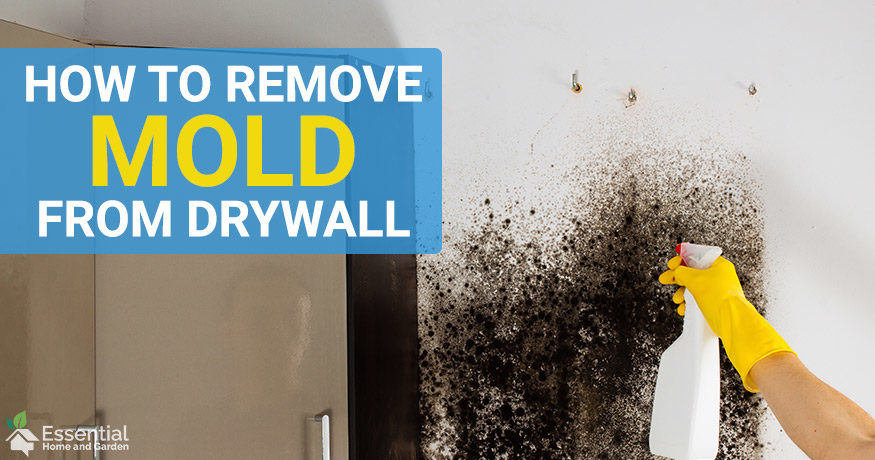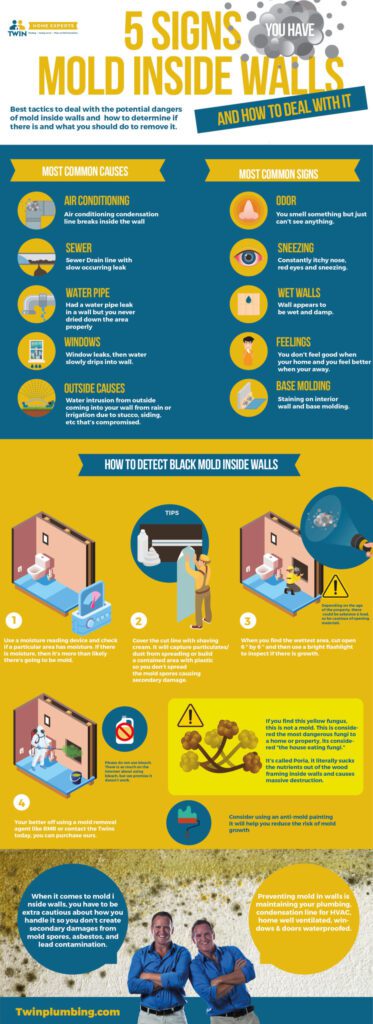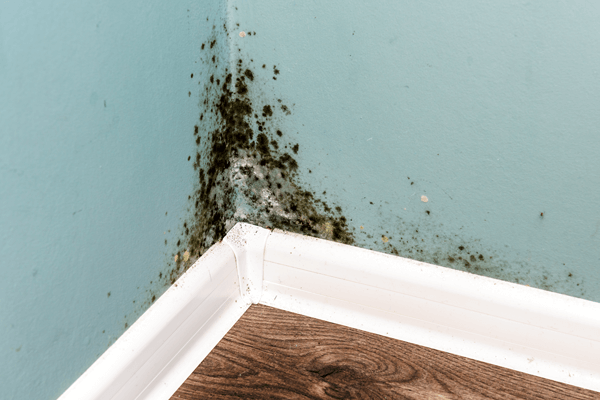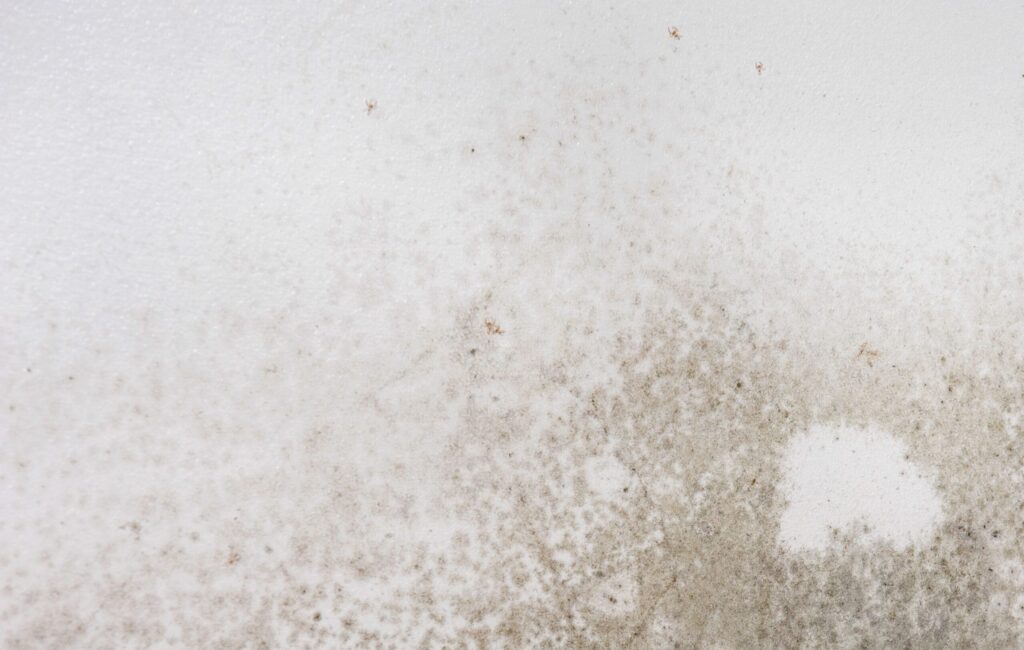In this article, you will learn all about removing black mold from drywall and what you need to know about mold remediation. Mold growth on drywall is a common problem that many people face, and it can be both unsightly and potentially harmful to your health. By understanding how to properly remove and remediate black mold from drywall, you can effectively address the issue and create a safe living environment for yourself and your family.
First and foremost, it’s important to understand that black mold on drywall should be taken seriously. It can cause a variety of health problems, including respiratory issues, allergies, and even more severe reactions in some individuals. If you suspect that you have black mold on your drywall, it’s crucial to address the issue as soon as possible. The process of removing black mold from drywall involves several steps, such as isolating the affected area, wearing protective gear, and using the right cleaning products. It’s also crucial to identify and address the source of moisture that is causing the mold growth, as failing to do so will only lead to recurring mold problems. By following the proper procedures for mold remediation, you can effectively eliminate black mold from your drywall and prevent it from spreading to other areas of your home.

Understanding Black Mold
Black mold, also known as Stachybotrys chartarum, is a type of fungus that thrives in damp and humid conditions. It commonly appears as black or dark green patches on surfaces, and it is notorious for its potential health hazards. In this article, we will explore the dangers of black mold, where it tends to grow, and how to identify it on drywall.
What is black mold?
Black mold is a type of mold that produces mycotoxins, which are toxic substances that can be harmful to humans and animals. It thrives in areas with high moisture levels, such as bathrooms, basements, and kitchens. Black mold can be recognized by its characteristic dark color and slimy texture.
The dangers of black mold
Exposure to black mold can lead to a variety of health problems, particularly for individuals with weakened immune systems, respiratory conditions, or allergies. The mycotoxins released by black mold can irritate the respiratory system, leading to symptoms such as coughing, sneezing, and wheezing. Prolonged exposure to black mold may even result in chronic respiratory issues or more severe health complications.
Where does black mold grow?
Black mold thrives in moist environments with poor ventilation. It can often be found growing on damp drywall, especially in areas that have experienced water damage or excessive moisture. The presence of black mold on drywall is a clear indication of an underlying moisture problem that needs to be addressed promptly.
Identifying Black Mold on Drywall
Common signs of black mold on drywall
When inspecting your drywall for black mold, there are several common signs to look out for. These include:
- Visible black or dark green patches on the surface of the drywall.
- A musty odor emanating from the affected area.
- Water stains or discoloration on the drywall.
- Peeling or bubbling paint or wallpaper.
If you notice any of these signs, it is vital to take immediate action to prevent the spread of mold and protect your health.
How to differentiate black mold from other types
While black mold is commonly associated with its dark color, it is essential to note that not all black molds are of the Stachybotrys chartarum species. To properly differentiate black mold from other types, it is recommended to have the mold tested by a professional laboratory or hire a mold remediation specialist.
Testing for black mold on drywall
If you suspect the presence of black mold on your drywall, various testing methods can confirm your suspicions. Air sampling, surface sampling, and bulk sampling are common mold testing techniques. However, it’s important to keep in mind that testing should be conducted by a professional to ensure accurate results.
Health Risks Associated with Black Mold
Respiratory problems caused by black mold
Exposure to black mold can have a significant impact on your respiratory system. The mycotoxins released by black mold can irritate the airways and lead to respiratory problems such as coughing, wheezing, and shortness of breath. Individuals with asthma or other respiratory conditions may experience exacerbated symptoms when exposed to black mold.
Allergic reactions to black mold
Some people may develop allergic reactions to black mold, characterized by symptoms such as sneezing, nasal congestion, itching, and skin rashes. These reactions occur when the immune system overreacts to the presence of the mold spores in the environment.
Long-term health effects of black mold exposure
Prolonged exposure to black mold can have severe long-term health effects. It has been implicated as a potential trigger for chronic respiratory conditions, such as asthma and bronchitis. Additionally, some studies suggest a link between black mold exposure and conditions like chronic fatigue syndrome and depression. Therefore, it is crucial to address black mold issues promptly to protect your health.
Mold Remediation Techniques
Importance of professional mold remediation
When it comes to dealing with black mold on drywall, professional mold remediation is highly recommended. Mold remediation specialists are trained to assess the extent of the mold infestation, contain the affected area, remove the mold safely, and restore the affected surfaces. They have the expertise and specialized equipment necessary to ensure thorough and effective mold removal.
DIY mold removal on drywall
While some minor mold problems may be manageable through DIY methods, it is important to exercise caution. Removing black mold from drywall yourself can be risky and may lead to further contamination if not done correctly. It is always best to consult with a professional to determine the appropriate course of action.
Steps for effective mold remediation
If you decide to tackle mold remediation on your own, it is essential to follow proper procedures to ensure effective results. The following steps can serve as a general guideline for mold remediation on drywall:
- Wear protective gear, including gloves, goggles, and a respirator, to protect yourself from mold spores and mycotoxins.
- Isolate the affected area by sealing off doorways and vents with plastic sheeting and duct tape.
- Remove any wet or mold-damaged materials, such as drywall, carpet, or insulation, using proper containment and disposal procedures.
- Clean and disinfect non-porous surfaces with a commercial mold cleaner or a solution of water and detergent, ensuring thorough coverage.
- Dry the area completely using dehumidifiers, fans, or open windows to prevent further mold growth.
- Monitor the area regularly for any signs of recurring mold and address any underlying moisture issues.

Protecting Yourself During Mold Removal
Using protective gear
When engaging in mold removal activities, it is crucial to protect yourself from exposure to mold spores and mycotoxins. This can be achieved by wearing appropriate protective gear, including gloves, goggles, and a respirator. Additionally, make sure to wash your hands thoroughly after handling mold-contaminated materials.
Proper ventilation during mold removal
Proper ventilation is essential during mold removal to help dissipate mold spores and prevent their spread to other areas of the home. Open windows and use fans or dehumidifiers to circulate fresh air. However, be cautious not to create cross-contamination by allowing airflow from the affected area to other parts of the house.
Safe disposal of contaminated materials
During mold removal, it is imperative to handle and dispose of contaminated materials safely. Double-bagging the materials in heavy-duty plastic bags and sealing them tightly will help prevent the spread of mold spores. Consult local regulations or waste management authorities for proper disposal guidelines.
Preventing Black Mold Growth on Drywall
Controlling moisture levels in the home
One of the most effective ways to prevent black mold growth on drywall is to control moisture levels in your home. Address any leaks or water damage promptly, ensure proper ventilation in areas prone to moisture, such as bathrooms and kitchens, and use dehumidifiers in humid environments.
Proper insulation and ventilation
Proper insulation and ventilation play a crucial role in preventing moisture buildup on drywall. Ensure that your home is adequately insulated to prevent condensation, and install ventilation systems, such as exhaust fans, in areas that generate moisture, like bathrooms and kitchens.
Regular inspections and maintenance
Regular inspections and maintenance can help identify and address potential mold problems before they become severe. Keep an eye out for signs of water damage or moisture buildup, such as discoloration, peeling paint, or musty odors. If you notice any issues, take immediate action to prevent the growth of black mold.

Hiring a Mold Remediation Professional
Benefits of hiring a professional
Hiring a professional mold remediation company offers several advantages. These professionals have the necessary knowledge and experience to effectively assess and remediate mold issues. By hiring experts, you can ensure a thorough job, minimize the risk of cross-contamination, and receive guidance on preventing future mold growth.
Choosing the right mold remediation company
When selecting a mold remediation company, consider factors such as their experience, reputation, certifications, and insurance coverage. Request references and read reviews from previous clients to ensure their reliability and quality of service. Additionally, verify that they follow industry-standard practices and use proper containment and removal procedures.
Questions to ask when hiring a professional
To ensure you are making an informed decision, ask the following questions when hiring a mold remediation professional:
- Are you licensed and certified in mold remediation?
- Do you have liability insurance?
- Can you provide references from previous clients?
- What containment and disposal procedures do you follow?
- What techniques do you use for mold removal and prevention?
- How do you assess the extent of the mold infestation?
- Do you offer any warranties or guarantees for your work?
Understanding the Cost of Mold Remediation
Factors that influence the cost of mold remediation
The cost of mold remediation can vary depending on several factors, including the size and extent of the mold infestation, the location of the mold, the accessibility of the affected area, and the level of containment and removal required. Additional factors that may influence the cost include the need for structural repairs and the use of specialized equipment.
Average costs of mold remediation on drywall
On average, mold remediation on drywall can cost between $500 to $6,000, depending on the factors mentioned above. Smaller, localized mold problems may fall on the lower end of the cost spectrum, while larger, widespread infestations or hidden mold may require more extensive remediation and, therefore, incur higher costs.
Insurance coverage for mold remediation
While insurance policies can vary, mold remediation is typically not covered under standard homeowners’ insurance policies. However, certain circumstances, such as mold resulting from a covered water damage event, may be eligible for coverage. It is advisable to review your insurance policy and consult with your insurance provider to understand the extent of your coverage.

Legal and Insurance Considerations
Insurance policies and mold damage coverage
As previously mentioned, mold damage is generally not covered under standard homeowners’ insurance policies. However, some insurance providers offer mold damage endorsements or riders that can be added to your policy for additional coverage. It is essential to review your policy and consult with your insurance provider to understand the specifics of your coverage.
Legal implications for failing to address mold issues
Failing to address mold issues promptly can have legal implications, particularly in real estate transactions. Sellers are typically required to disclose any known mold problems, and failure to do so can lead to legal disputes and potential financial liabilities. Additionally, neglecting mold issues in rental properties can result in lawsuits from tenants or violations of housing regulations.
Understanding mold disclosures in real estate transactions
When buying or selling a property, mold disclosures play a crucial role in informing the parties involved about any known mold issues. Sellers are typically required to complete a mold disclosure form, disclosing any current or previous mold problems and their remediation. Buyers should carefully review these disclosures and conduct thorough inspections to ensure they are fully informed of any potential mold issues.
Conclusion
When it comes to black mold on drywall, prompt action is essential to protect your health and prevent further damage. Understanding the dangers of black mold, identifying its presence, and implementing proper remediation techniques is key. Whether you decide to hire a professional or tackle the issue yourself, taking immediate action and implementing preventive measures can help ensure a mold-free and healthy living environment. Remember, your safety and well-being should never be compromised when dealing with black mold on drywall.
